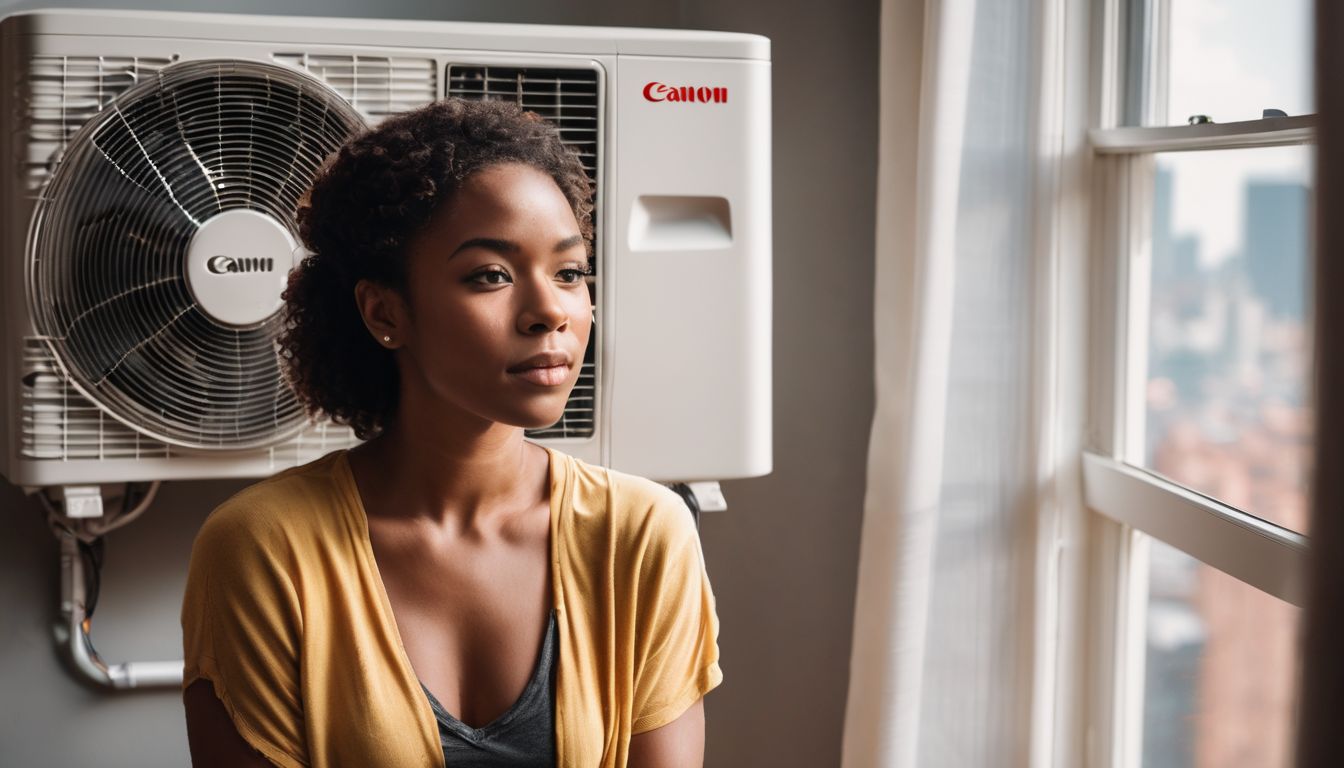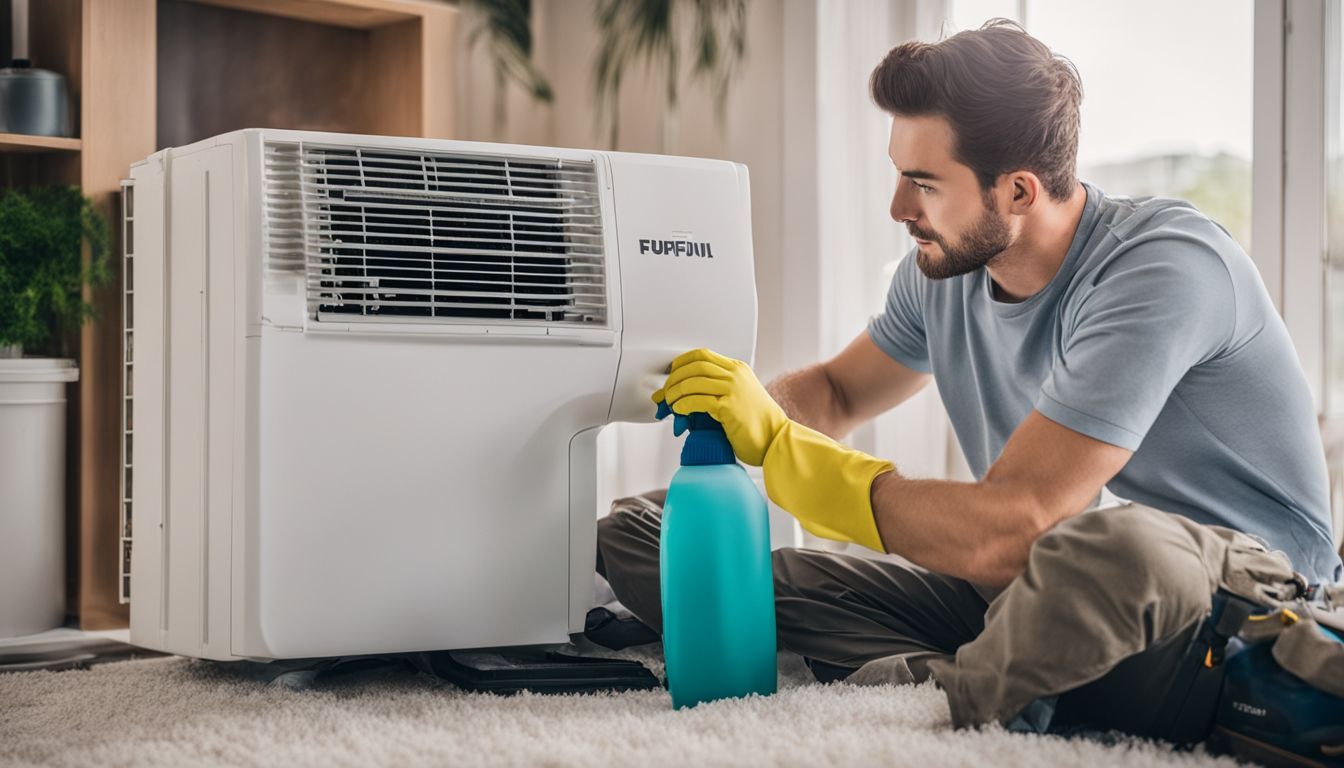Installing an air conditioner seems straightforward, but common errors can cause headaches and heatwaves. An undersized unit strains to cool your home, hiking up power costs. Our post guides you through avoiding these pitfalls for a cool, comfy abode.
Stay frosty and read on!
Common Mistakes During Aircon Installation
Overlooking key factors during aircon installation can lead to inefficiency and discomfort. From mismatched unit sizes to botched thermostat locations, these errors can significantly impact your system’s performance and energy consumption.
Choosing the Wrong Size of Aircon Unit
Selecting an air conditioning unit that’s too small won’t effectively cool your room. It’ll be running non-stop, trying to reach the set temperature but never quite making it. This constant operation can wear out the system quickly and bump up energy bills as it consumes more power than necessary.
On the flip side, an oversized air conditioner cools too fast without properly dehumidifying the air, leaving you with a clammy feeling indoors.
Ensure proper load calculation before installation to find the right size for your space. A professional contractor will determine how much cooling capacity is needed based on room dimensions, window sizes, and insulation quality.
They’ll pinpoint the exact British thermal units (BTUs) required for efficient cooling and comfort without excess humidity or soaring energy consumption. Without correct sizing, not only does comfort take a hit but indoor air quality may suffer due to inadequate humidity control and increased chances of mould growth from lingering dampness.
Incorrect Placement of the Air Conditioner
Placing your air conditioner in the wrong spot can be a costly error. It not only leads to patchy cooling but also ramps up your electric bill due to inefficient energy use. You should steer clear of areas where sunlight beams directly for prolonged periods, as the heat will cause the unit to work harder than necessary.
Nearby heat-generating appliances are another red flag – these can trick your thermostat into thinking the room is warmer than it is.
Your air conditioner works best when located in a cool, shaded area with plenty of space for unrestricted airflow. Proper installation away from windows and out of direct sunlight ensures that the system operates optimally and keeps your space comfortably dehumidified without overworking itself or hiking up energy costs.
Make sure there’s enough clearance around the unit so it breathes easily, avoiding tight enclosures like a crawlspace which might limit its performance and lead to indoor air pollution.
Improper Thermostat Installation
Improper thermostat installation can cause your air conditioning system to run inefficiently or even damage it. If placed in the wrong location, a thermostat may misread the actual temperature of your home, causing your HVAC unit to work harder than necessary.
This not only wastes energy but also puts undue strain on your system, which could lead to costly repairs. A properly installed thermostat should be away from direct sunlight and drafts as these can affect its readings and performance.
Professionals know that thermostats require careful positioning to ensure energy efficiency throughout your living space. They avoid areas near windows, doors, air ducts, and any spot where natural temperature fluctuations occur frequently.
Without correct placement and insulation by insulating foam around the device, you risk inaccurate temperatures leading to discomfort and higher utility bills. Trusting an experienced technician with this crucial aspect of aircon installation will help safeguard against malfunctions that stem from poor thermostat setup.
How to Choose the Right Location for Your Aircon
To ensure your aircon provides effective cooling and operates at peak efficiency, select a location that avoids direct sunlight. Install the unit in a shaded area to prevent it from working harder than necessary, which can save on energy bills.
Keep it away from heat-producing appliances such as cookers or lamps to avoid confusing the thermostat sensors.
Make sure there’s enough clearance around the air conditioner for unobstructed airflow. A professional installation can help you determine where best to position both outdoor and indoor components of a split system or central air conditioner for maximum effectiveness.
Access for regular maintenance should also be considered; an easily accessible spot will simplify cleaning and servicing tasks, extending the life of your HVAC system. Avoid areas prone to water damage or heavy dust accumulation which could harm internal parts like the fan coil unit.
Prioritise locations that are within reach but out of busy traffic zones in your home to reduce noise disturbance and potential hazards from tripping over the unit or its wiring.
How to Avoid These Installation Blunders
Ensure you choose an air conditioner that matches the size of your space. An oversized or undersized unit will not cool your home efficiently and could drive up your energy bills. Before making a purchase, conduct a free site survey to determine the appropriate capacity needed for heating, ventilation, and air conditioning (HVAC) performance.
Selecting materials of high quality for insulation and seals helps prevent future problems like water leaks and ensures energy-efficient operation.
Place your thermostat away from heat sources such as windows or lamps to avoid false temperature readings. Check for refrigerant leaks after completing the installation; this step is crucial for maintaining cooling efficiency.
Properly seal all units, install pipes correctly, and wire electrical components carefully during setup. Always lift heavy parts with care to avoid damage during movement or installation—neglecting these steps can lead to faulty operations that may introduce pollutants into your living space or cause inefficiency in ventilating warm air out of the room.
Signs your Aircon is not Installed Properly
Your aircon struggling to maintain the desired temperature could be a telltale sign of incorrect installation. This might manifest as warm spots in rooms or an overall inability to cool your space efficiently.
It’s often due to faulty thermostat positioning, which leads to misreading indoor temperatures and poor communication with the aircon system. Additionally, if you notice your energy bills climbing without any clear increase in usage, it could signal that your unit is having to work harder than necessary because of improper sizing or installation.
Leaks and moisture around your air conditioning unit shouldn’t be ignored as they can point towards incorrect fitting or blockages within the heat exchanger. Persistent dripping and puddles near the system are indicators that something isn’t quite right with how it was installed.
Moreover, odd smells wafting from the vents can suggest mould growth within ducts — a serious concern not just for efficiency but also for health, highlighting errors made during installation that have allowed moisture build-up leading to fungal growth.
Conclusion
In conclusion, steering clear of aircon installation blunders is pivotal to ensure your comfort and energy efficiency. Always consider the unit size, proper location, and professional installation methods.
Address these aspects meticulously to reap the full benefits of your air conditioner. Let’s sidestep these pitfalls for a cooler, more relaxing home environment.
For a comprehensive guide on selecting the perfect spot for your air conditioner, be sure to read our detailed article on how to choose the right location for your aircon.
FAQs
1. What common mistakes should I avoid when installing an air conditioner?
When installing air conditioners, be sure not to block airflow, install them in a spot with direct sunlight or neglect proper insulation.
2. Can I install my new aircon by myself?
It’s best to have your air conditioners installed by professionals since doing it yourself might lead to errors that could affect the unit’s efficiency and lifespan.
3. Why shouldn’t I place my air conditioner in a sunny area?
Your air conditioner will have to work harder if it’s in direct sunlight, which can lead to quicker wear and tear and higher energy bills.
4. How important is correct insulation during aircon installation?
Proper insulation is crucial for keeping cool air inside the room; without it, your air conditioner won’t be as effective and could cost more money in running costs.





